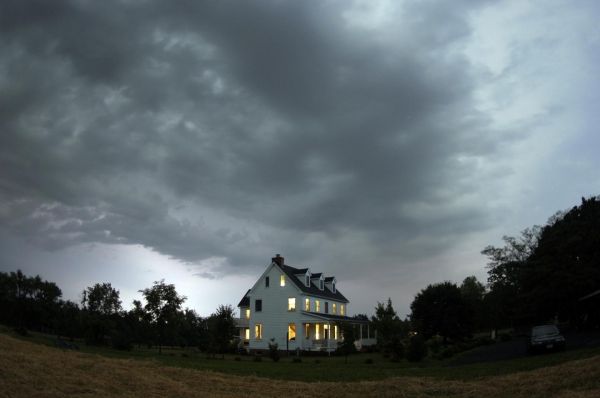UMD researchers are connecting climate change to urban and suburban stormwater management, with the ultimate goal of increasing resiliency to major storm events. With models not only predicting more rain, but an increased frequency of particularly intense and destructive storms, flooding is a major concern in communities that are becoming more settled with more asphalt. Flooding doesn’t just cause property damage, but it impacts the health of the Chesapeake Bay through increased nutrient runoff and pollution. In a new case study published in the Journal of Water Resources Planning and Management, researchers examine two distinct watersheds and demonstrate that even small decentralized stormwater management practices like rain gardens can make a big cumulative difference to the resiliency of a watershed, using predictive modeling to assess what climate change will demand of our future stormwater management systems.
“What we design now is in place for 20 or 30 years, so we should design it with future climate conditions in mind as opposed to what the past rain has looked like,” explains Mitchell Pavao-Zuckerman, assistant professor in Environmental Science & Technology. “This work puts emphasis on what’s happening in local upland spaces that has immediate implications for the people who are living in these watersheds for future flood mitigation, but connects this to the broader issues of how increased runoff links to the health of the Chesapeake Bay.”
With this study, Pavao-Zuckerman and graduate student Emma Giese take a practical look at what suburban areas are currently doing to manage their stormwater, and provide some evidence on how and why to implement green infrastructure based on how these systems will hold up in the future. Pavao-Zuckerman and Giese leveraged data available from the United States Geological Survey (USGS) for two watersheds in Clarksburg, Maryland, a suburban town in Montgomery County that is only growing and continuing to develop. These two watersheds each have a distinct development history - one has several larger-scale detention ponds or stormwater basins for a more traditional approach to stormwater management, while the other has a heavy presence of smaller-scale green infrastructure like rain gardens, dry detention ponds, and sand filters. Both watersheds were monitored before and after development to see the impacts of green infrastructure, and both are near a weather monitoring station with climate data that is readily accessible.
Read more at: University of Maryland
UMD researchers are connecting climate change to stormwater management, with the goal of increasing resiliency to major storm events. In a new case study, researchers examine two distinct watersheds and demonstrate that even small decentralized stormwater management practices like rain gardens can make a big cumulative difference to the resiliency of a watershed, using predictive modeling to assess what climate change will demand of our future stormwater management systems. (Photo Credit: Edwin Remsberg)


